It looks like you're using an Ad Blocker.
Please white-list or disable AboveTopSecret.com in your ad-blocking tool.
Thank you.
Some features of ATS will be disabled while you continue to use an ad-blocker.
share:
What was once thought to be the domain of armchair conspiracy theorists, now seems to get some scientific backing: I'm referring to the analysis of
satellite imagery of other planets in search of anomalous, potentially artificial features (meaning those that have not been left behind by us). In a
pretty recent
publication, Mark J. Carlotto investigates unusual structures on the far side of the moon in the crater Paracelsus C. Since I haven't
seen it posted anywhere on ATS, I thought it's worth creating a thread on this topic. And here goes a close up of the feature in question:
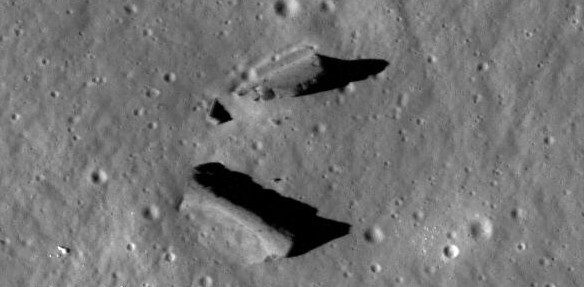 Source/Arizona State University
Source/Arizona State University
Two things stand out regarding this find: Firstly, the surroundings are pretty uniform and featureless compared to the anomaly itself. And secondly, Carlotto describes how he applied a filter that is normally used to detect artificial features on Earth using a variety of statistical methods to distinguish between natural background and artificial structures (taking into account that houses, vehicles and similar artificial features cause an anisotropic effect in 2D that is pretty unique). Ultimately the anomaly in the lunar image shows the same result (as the artificial counterpart on Earth) when the filter is applied:
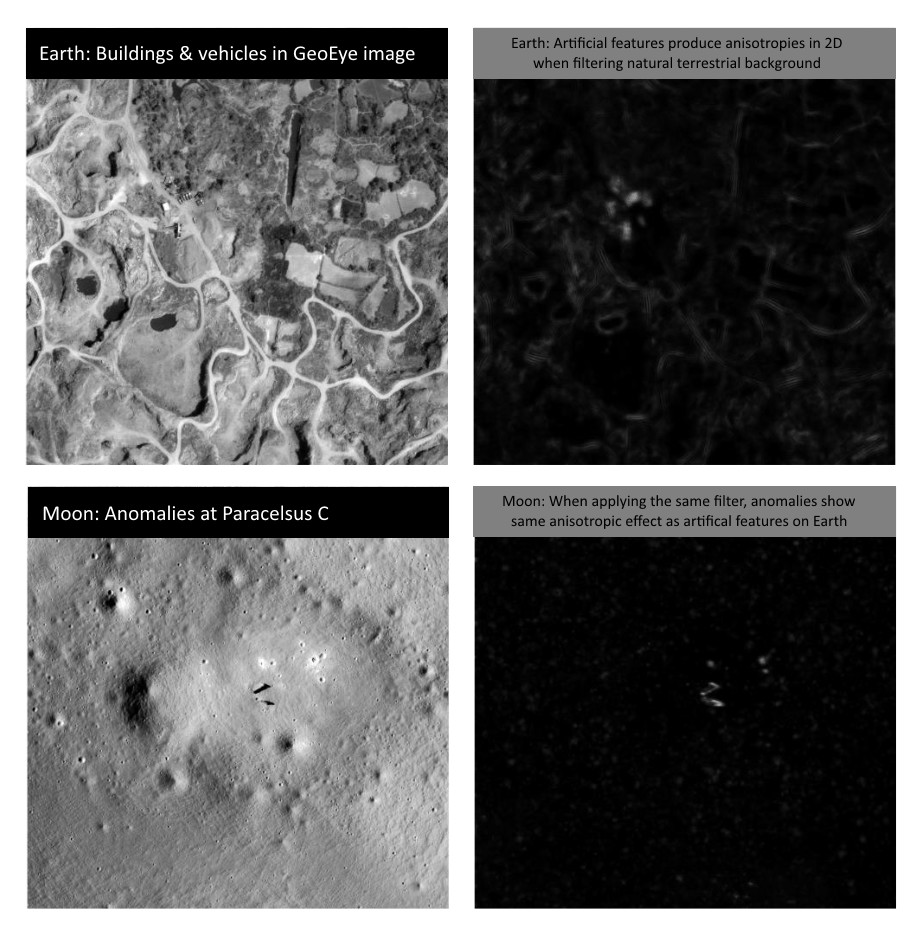 Click for larger version
Click for larger version
I'm not sure how valid this method is when it comes to features on the moon, but perhaps this is something to be discussed later in the thread. And just in case you don't have the time to read through Carlotto's article, the most important aspects are also summarized in this YouTube clip.
Credentials of Mark J. Carlotto & his affiliation with John E. Brandenburg
Some on here may be cautious regarding Carlotto, especially due to his cooperation with John Brandenburg, who is known among conspiracy theorists for his claim about nuclear explosions on Mars (related to the discovery of unusually high amounts of potassium and thorium in certain regions of Mars, see details here). Also, it seems that both of them are still not 100% convinced that Cydonia on Mars is a natural formation. But despite all this, and their joint venture 'Earth Ancients' which aims to investigate these and other anomalies, Carlotto does have a respectable professional background in engineering and science (see M. J. Carlotto). As for John E. Brandenburg, one might have to be a bit more critical if we are to believe what has been written about him here.
Other interesting features on the moon
Now I know there's been a lot of buzz about anomalies on the moon over the past years and decades, but I always found it difficult to actually find some good ones, especially those that are properly sourced and not fake (I guess we all know there's a whole lot of photoshopped stuff out there, so the ones which can be found in official imagery should be a good starting point). Here go a few more features that I thought might be worth mentioning when talking about potential anomalies on the moon.
Pyramidal structure at Ryder Crater:
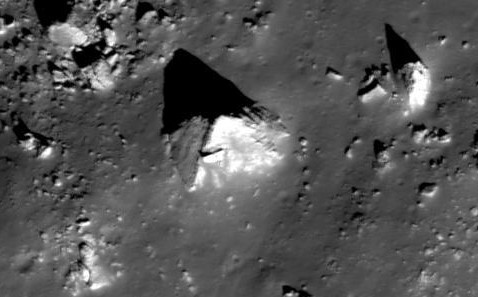 Source
Source
Rounded triangular feature (in same image as above):
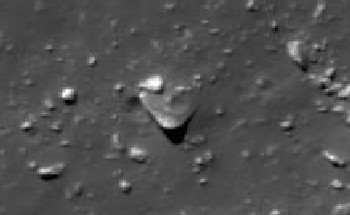 Source
Source
Igloo like structure at Aristarchus Crater:
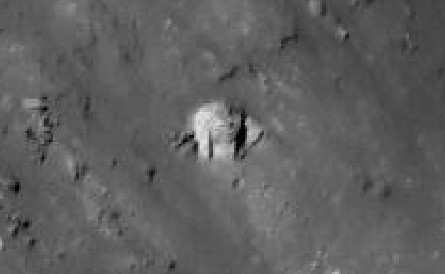 Source
Source
Apollo 16: "House Rock":
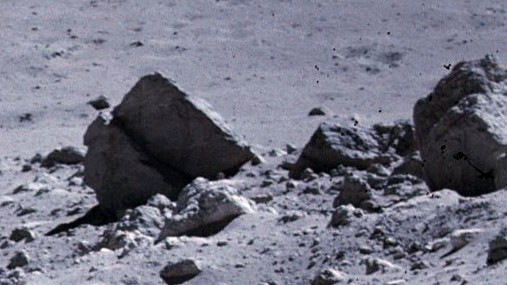 Frame 1 /
Frame 2
Frame 1 /
Frame 2
It may be noteworthy to mention that the pyramidal structure features steps and a quite consistent geometry, with the exception of the section hidden by the shadow. Further on, when looking at the Apollo 16 image we see a rather interesting shape of the big slab to the left and the cylindrical looking block on the right hand side. I'm not saying all these features are necessarily artificial in nature but they do stand out in many ways when compared to the other rubble in the vicinity.
Finally, I would like to leave you with a reference to an article by Penn State Prof Jason T. Wright which has been accepted for publication in the International Journal of Astrobiology. This work more or less ties in with the basic premise of this thread, namely that the thought of artificial remains left behind by another technological civilization throughout our solar system may not be as crazy as many people might think:
Thanks for reading up to here and I very much look forward to your thoughts on this (as always)!
SOURCES AND LINKS:
------------------------------------------
01. Article in Journal of Space Exploration
02. Unusual Features at Paracelsus C (LROC Source Image)
03. YouTube Clip: The Paracelsus C Anomaly
04. More Information about Mark J. Carlotto
05. Mark J. Carlotto: details on researchgate.net
06. LROC Ryder Crater: Pyramidal Structure (Source Image)
07. LROC Aristarchus Crater: Igloo Structure (Source Image)
08. Apollo 16: "House Rock" Frame 1 (Source Image)
09. Apollo 16: "House Rock" Frame 2 (Source Image)
10. J. Brandenburg: Evidence for Large, Anomalous Nuclear Explosions on Mars
11. Jason T. Wright: Prior Indigenous Technological Species

Two things stand out regarding this find: Firstly, the surroundings are pretty uniform and featureless compared to the anomaly itself. And secondly, Carlotto describes how he applied a filter that is normally used to detect artificial features on Earth using a variety of statistical methods to distinguish between natural background and artificial structures (taking into account that houses, vehicles and similar artificial features cause an anisotropic effect in 2D that is pretty unique). Ultimately the anomaly in the lunar image shows the same result (as the artificial counterpart on Earth) when the filter is applied:

I'm not sure how valid this method is when it comes to features on the moon, but perhaps this is something to be discussed later in the thread. And just in case you don't have the time to read through Carlotto's article, the most important aspects are also summarized in this YouTube clip.
Credentials of Mark J. Carlotto & his affiliation with John E. Brandenburg
Some on here may be cautious regarding Carlotto, especially due to his cooperation with John Brandenburg, who is known among conspiracy theorists for his claim about nuclear explosions on Mars (related to the discovery of unusually high amounts of potassium and thorium in certain regions of Mars, see details here). Also, it seems that both of them are still not 100% convinced that Cydonia on Mars is a natural formation. But despite all this, and their joint venture 'Earth Ancients' which aims to investigate these and other anomalies, Carlotto does have a respectable professional background in engineering and science (see M. J. Carlotto). As for John E. Brandenburg, one might have to be a bit more critical if we are to believe what has been written about him here.
Other interesting features on the moon
Now I know there's been a lot of buzz about anomalies on the moon over the past years and decades, but I always found it difficult to actually find some good ones, especially those that are properly sourced and not fake (I guess we all know there's a whole lot of photoshopped stuff out there, so the ones which can be found in official imagery should be a good starting point). Here go a few more features that I thought might be worth mentioning when talking about potential anomalies on the moon.
Pyramidal structure at Ryder Crater:

Rounded triangular feature (in same image as above):

Igloo like structure at Aristarchus Crater:

Apollo 16: "House Rock":

It may be noteworthy to mention that the pyramidal structure features steps and a quite consistent geometry, with the exception of the section hidden by the shadow. Further on, when looking at the Apollo 16 image we see a rather interesting shape of the big slab to the left and the cylindrical looking block on the right hand side. I'm not saying all these features are necessarily artificial in nature but they do stand out in many ways when compared to the other rubble in the vicinity.
Finally, I would like to leave you with a reference to an article by Penn State Prof Jason T. Wright which has been accepted for publication in the International Journal of Astrobiology. This work more or less ties in with the basic premise of this thread, namely that the thought of artificial remains left behind by another technological civilization throughout our solar system may not be as crazy as many people might think:
Prior Indigenous Technological Species
One of the primary open questions of astrobiology is whether there is extant or extinct life elsewhere the Solar System. Implicit in much of this work is that we are looking for microbial or, at best, unintelligent life, even though technological artifacts might be much easier to find. SETI work on searches for alien artifacts in the Solar System typically presumes that such artifacts would be of extrasolar origin, even though life is known to have existed in the Solar System, on Earth, for eons. But if a prior technological, perhaps spacefaring, species ever arose in the Solar System, it might have produced artifacts or other technosignatures that have survived to present day (...)
Thanks for reading up to here and I very much look forward to your thoughts on this (as always)!
SOURCES AND LINKS:
------------------------------------------
01. Article in Journal of Space Exploration
02. Unusual Features at Paracelsus C (LROC Source Image)
03. YouTube Clip: The Paracelsus C Anomaly
04. More Information about Mark J. Carlotto
05. Mark J. Carlotto: details on researchgate.net
06. LROC Ryder Crater: Pyramidal Structure (Source Image)
07. LROC Aristarchus Crater: Igloo Structure (Source Image)
08. Apollo 16: "House Rock" Frame 1 (Source Image)
09. Apollo 16: "House Rock" Frame 2 (Source Image)
10. J. Brandenburg: Evidence for Large, Anomalous Nuclear Explosions on Mars
11. Jason T. Wright: Prior Indigenous Technological Species
edit on 30-4-2017 by jeep3r because:
text
that one is in my opinion the best lunar anomaly ever i have no idea what could cause it
a reply to: seasonal
I'm glad you like it! There's been a ton of fake images of alleged moon anomalies incl. those of temple ruins taken from satellite imagery of Earth that have been recolored to look like lunar images.
So I thought it's good idea to make a thread with some features that can actually be found in LROC images (and other official sources) at a reasonable resolution.
I'm glad you like it! There's been a ton of fake images of alleged moon anomalies incl. those of temple ruins taken from satellite imagery of Earth that have been recolored to look like lunar images.
So I thought it's good idea to make a thread with some features that can actually be found in LROC images (and other official sources) at a reasonable resolution.
a reply to: jeep3r
With all due respect, nature is quite good at making regular, symetric, squearsish shapes on its own.
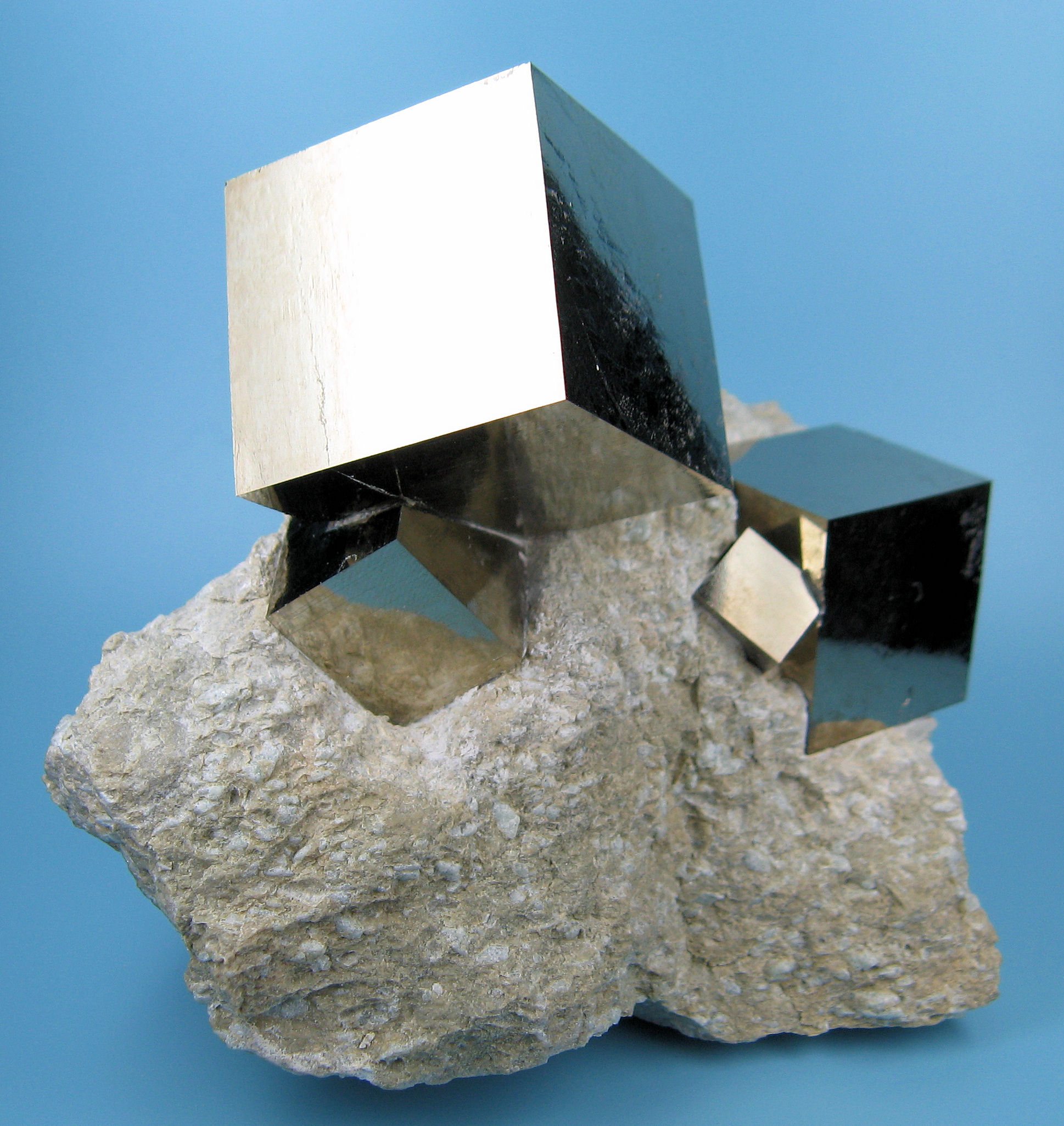
(In this photo, Pyrite crystals)
Detecting life (past or present) on another celestial body will have to employ much more than just saying "this looks like a life form".
With all due respect, nature is quite good at making regular, symetric, squearsish shapes on its own.

(In this photo, Pyrite crystals)
Detecting life (past or present) on another celestial body will have to employ much more than just saying "this looks like a life form".
edit
on 30-4-2017 by wildespace because: (no reason given)
a reply to: wildespace
Well, but looking away won't help either. Hence this thread (and others I previously drafted).
There are indeed many geological processes that can cause a myriad of different shapes, some of which may inspire us to believe we see the remnants of a past civilization.
Whereas most of such features may be natural, I wouldn't want to miss that intriguing set of images that possibly shows artificial structures (or ET lifeforms) in a way that speaks for itself. So yes, we have to be cautious and look into natural explanations, but we also have to stay openminded. Just sayin' ...
Well, but looking away won't help either. Hence this thread (and others I previously drafted).
There are indeed many geological processes that can cause a myriad of different shapes, some of which may inspire us to believe we see the remnants of a past civilization.
Whereas most of such features may be natural, I wouldn't want to miss that intriguing set of images that possibly shows artificial structures (or ET lifeforms) in a way that speaks for itself. So yes, we have to be cautious and look into natural explanations, but we also have to stay openminded. Just sayin' ...
My issue with threads like this is the use of the word 'anomaly'.
The pictures you've posted are very cool, they show amazing things, but they are things that are very common and are in no way out of place. They are, to put it bluntly, just rocks. Very cool rocks, taken by amazing pieces of techology, but nonetheless just rocks.
They are in no way anomalous because that implies that they shouldn't be there, or that there has been a pre-judgement as to what they are. There is a tendency amongst those who are constantly trawling images of the moon and Mars for evidence of the life they are convinced is or was there to announce every supposed find as ''an anomaly", and the choice of the word is seen to give those findings credence when in reality what they have found is a rock.
I'm not criticising you for posting these images, I think they're great, I just don't like the assumption implied in advance that they are something they aren't.
The pictures you've posted are very cool, they show amazing things, but they are things that are very common and are in no way out of place. They are, to put it bluntly, just rocks. Very cool rocks, taken by amazing pieces of techology, but nonetheless just rocks.
They are in no way anomalous because that implies that they shouldn't be there, or that there has been a pre-judgement as to what they are. There is a tendency amongst those who are constantly trawling images of the moon and Mars for evidence of the life they are convinced is or was there to announce every supposed find as ''an anomaly", and the choice of the word is seen to give those findings credence when in reality what they have found is a rock.
I'm not criticising you for posting these images, I think they're great, I just don't like the assumption implied in advance that they are something they aren't.
a reply to: OneBigMonkeyToo
Thanks for your opinion, OBMT. I think most of the folks here on ATS who've been following my threads know that I'm referring to "potential anomalies" (perhaps that's a more appropriate term).
But I have to disagree regarding the other point you made: while these features may indeed be just rocks (with a strong likelihood that that's exactly what they are), they are anomalous in that they differ from the context of the surrounding area.
Also, if you look closely you will notice that most of them have geometrical properties and symmetries (to some extent) that other rocks or rubble doesn't have. So the features I picked for this thread do offer some unusual aspects which IMO is a justification for calling them potential anomalies.
Thanks for your opinion, OBMT. I think most of the folks here on ATS who've been following my threads know that I'm referring to "potential anomalies" (perhaps that's a more appropriate term).
But I have to disagree regarding the other point you made: while these features may indeed be just rocks (with a strong likelihood that that's exactly what they are), they are anomalous in that they differ from the context of the surrounding area.
Also, if you look closely you will notice that most of them have geometrical properties and symmetries (to some extent) that other rocks or rubble doesn't have. So the features I picked for this thread do offer some unusual aspects which IMO is a justification for calling them potential anomalies.
a reply to: jeep3r
I saw that some days ago and took a look at the original photos, and what I noticed was that although he says in the report that the bigger structure is 235 pixels long I measure 121 on the original photo, making a difference in all the all calculations.
Obviously, I may be wrong.
I saw that some days ago and took a look at the original photos, and what I noticed was that although he says in the report that the bigger structure is 235 pixels long I measure 121 on the original photo, making a difference in all the all calculations.
Obviously, I may be wrong.

a reply to: jeep3r
Good thread jeep3r , Why many people come to ATS in the first place .
The Aristarchus igloo photo is very interesting
lroc.sese.asu.edu...
S & f op
Good thread jeep3r , Why many people come to ATS in the first place .
The Aristarchus igloo photo is very interesting
lroc.sese.asu.edu...
S & f op
Here's the full-scale crop from the LROC image:
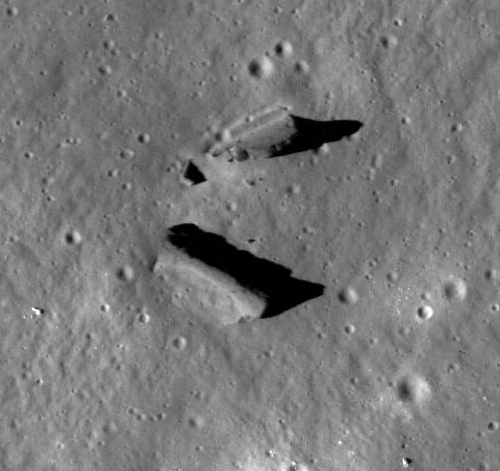
One thing that could help us a lot is looking at the objects' shadow, because it reveals something about the object's shape. You can tell that both object are not rectangular with straight sides, but are craggy and sloping. That supports the idea that these are natural rocks. That they are standing upright in a very flat and featureless terrain can be explained by geology or impact processes. We are, after all, looking at the crater floor; some material might have been thrown up and then landed sideways.
These might be similar rocks to the ones on Mars (albeit the martian ones could have formed with involvement of water):
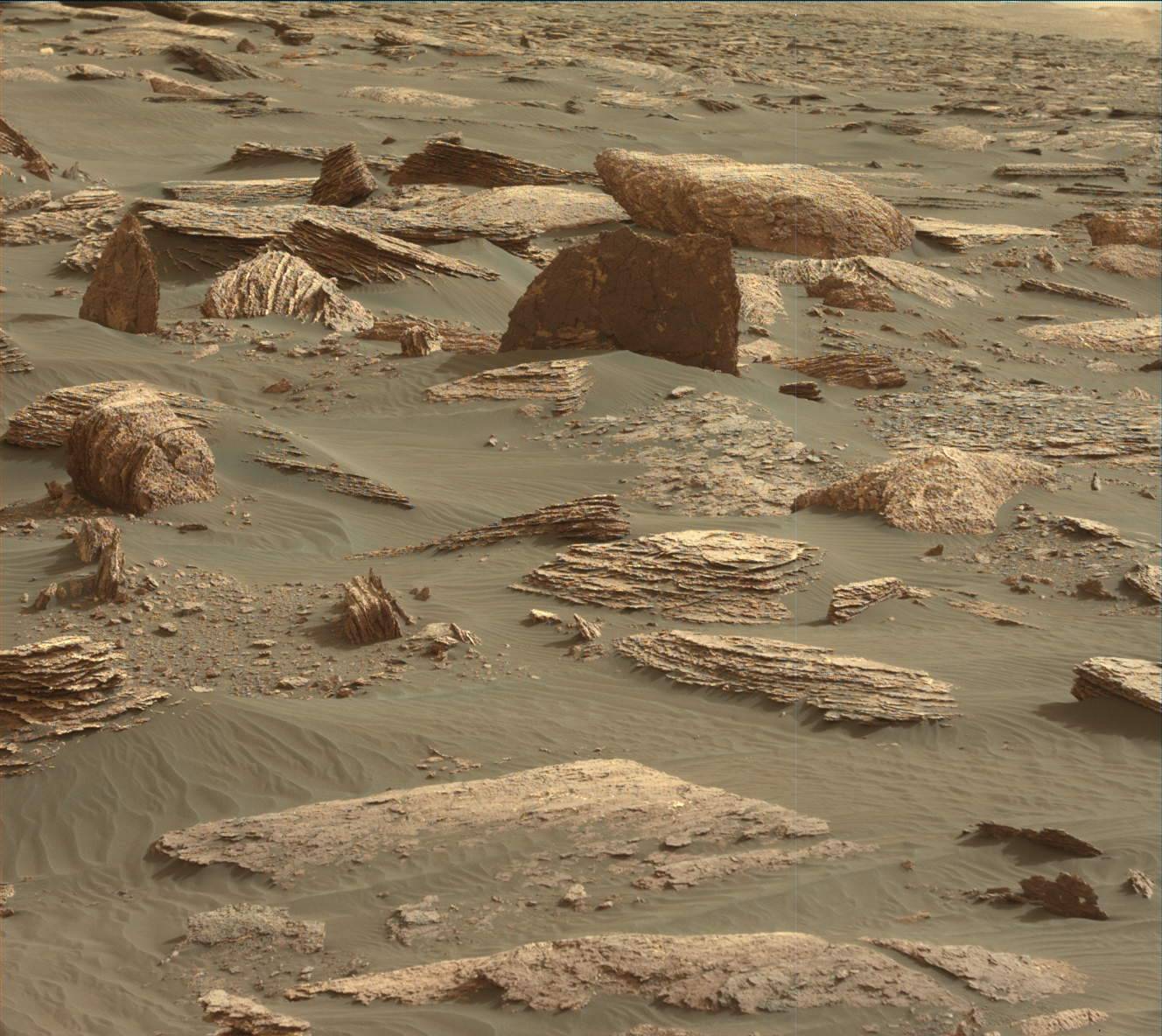
Another point about Carlotto's article is that the algorithm that reacts to buildings on Earth, is reacting here to the objects' shadows rather than the objects themselves. It's also reacting to small craters nearby, making it quite unreliable for analysing lunar terrain.

One thing that could help us a lot is looking at the objects' shadow, because it reveals something about the object's shape. You can tell that both object are not rectangular with straight sides, but are craggy and sloping. That supports the idea that these are natural rocks. That they are standing upright in a very flat and featureless terrain can be explained by geology or impact processes. We are, after all, looking at the crater floor; some material might have been thrown up and then landed sideways.
These might be similar rocks to the ones on Mars (albeit the martian ones could have formed with involvement of water):

Another point about Carlotto's article is that the algorithm that reacts to buildings on Earth, is reacting here to the objects' shadows rather than the objects themselves. It's also reacting to small craters nearby, making it quite unreliable for analysing lunar terrain.
edit on 1-5-2017 by
wildespace because: (no reason given)
a reply to: OneBigMonkeyToo
And my problem with your post is that you have zero proof that they are just rocks. This is why discussion and debate is good but shutting down possibilities bc you disagree doesn't mean you are correct, it just shows typical human egotism.
And my problem with your post is that you have zero proof that they are just rocks. This is why discussion and debate is good but shutting down possibilities bc you disagree doesn't mean you are correct, it just shows typical human egotism.
a reply to: PRSpinster
And there you are just disagreeing with me and trying to shut down my debate.
In the complete absence of anything suggesting they are anything otherwise (and even the OP is not claiming that they are anything other than rocks), I will take Occam's null hypothesis: they're rocks.
And there you are just disagreeing with me and trying to shut down my debate.
In the complete absence of anything suggesting they are anything otherwise (and even the OP is not claiming that they are anything other than rocks), I will take Occam's null hypothesis: they're rocks.
a reply to: jeep3r
Jeez, Mark J. Carlotto is a blast from the past and not a good one either! This guy used to have a page in a magazine I read in the mid-1990s. He wrote about Cydonia and ancient civilisations on Mars.
He taught me the valuable, embarrassing lesson that being a Dr. doesn't inoculate against credulousness. I was showing friends and family his Mars imagery and all the impressive measurements. They're laughing it off and I'm all, "Wait and see! He's a real scientist! Look! A doctor! These are NASA images!" Of course, the Mars Observer disproved all of his ratios, claims and patterns.
Here he is doing the same thing.
Jeep3r, Carlotto and Brandenburg are not bad guys, but they will take you on a wild goose chase based on no more than their wild imaginations. Enjoy the ride and expect the end to be a teachable moment.
Jeez, Mark J. Carlotto is a blast from the past and not a good one either! This guy used to have a page in a magazine I read in the mid-1990s. He wrote about Cydonia and ancient civilisations on Mars.
He taught me the valuable, embarrassing lesson that being a Dr. doesn't inoculate against credulousness. I was showing friends and family his Mars imagery and all the impressive measurements. They're laughing it off and I'm all, "Wait and see! He's a real scientist! Look! A doctor! These are NASA images!" Of course, the Mars Observer disproved all of his ratios, claims and patterns.
Here he is doing the same thing.
Jeep3r, Carlotto and Brandenburg are not bad guys, but they will take you on a wild goose chase based on no more than their wild imaginations. Enjoy the ride and expect the end to be a teachable moment.
I just came across this post at the Unmanned Spaceflight forum (where the participants are very knowlegeable, or even involved in the actual space
missions or working with the data) - www.unmannedspaceflight.com...
Based on the tiny craters that are actually on the surface of these objects, they conclude that those objects are very old, being there since around the time the crater formed. So, these indeed seem to be slabs of rock thrown up by the impact that created the crater. In the LROC image, will also see some boulders just lying there in clusters, as if someone brought them there. But again, I think they are the impact ejecta.
Based on the tiny craters that are actually on the surface of these objects, they conclude that those objects are very old, being there since around the time the crater formed. So, these indeed seem to be slabs of rock thrown up by the impact that created the crater. In the LROC image, will also see some boulders just lying there in clusters, as if someone brought them there. But again, I think they are the impact ejecta.
edit on
1-5-2017 by wildespace because: (no reason given)
originally posted by: ArMaP
a reply to: jeep3r
I saw that some days ago and took a look at the original photos, and what I noticed was that although he says in the report that the bigger structure is 235 pixels long I measure 121 on the original photo, making a difference in all the all calculations.
I confirm your measurement. I saw your reply yesterday but it took some time to convert the original EDR .img files into a commonly readable format. Afterwards I came to the same result of about 121 pixel.
So either he used an enlarged image, messed up the numbers or there's something we're not aware of when dealing with the source images. But it would be a strange error indeed!
a reply to: jeep3r
He used four LROC images on that report, M118769870L, M1115441699L, M1153132512R and M1168450258L, so I downloaded all of those and used ISIS to measure the object.
M118769870L
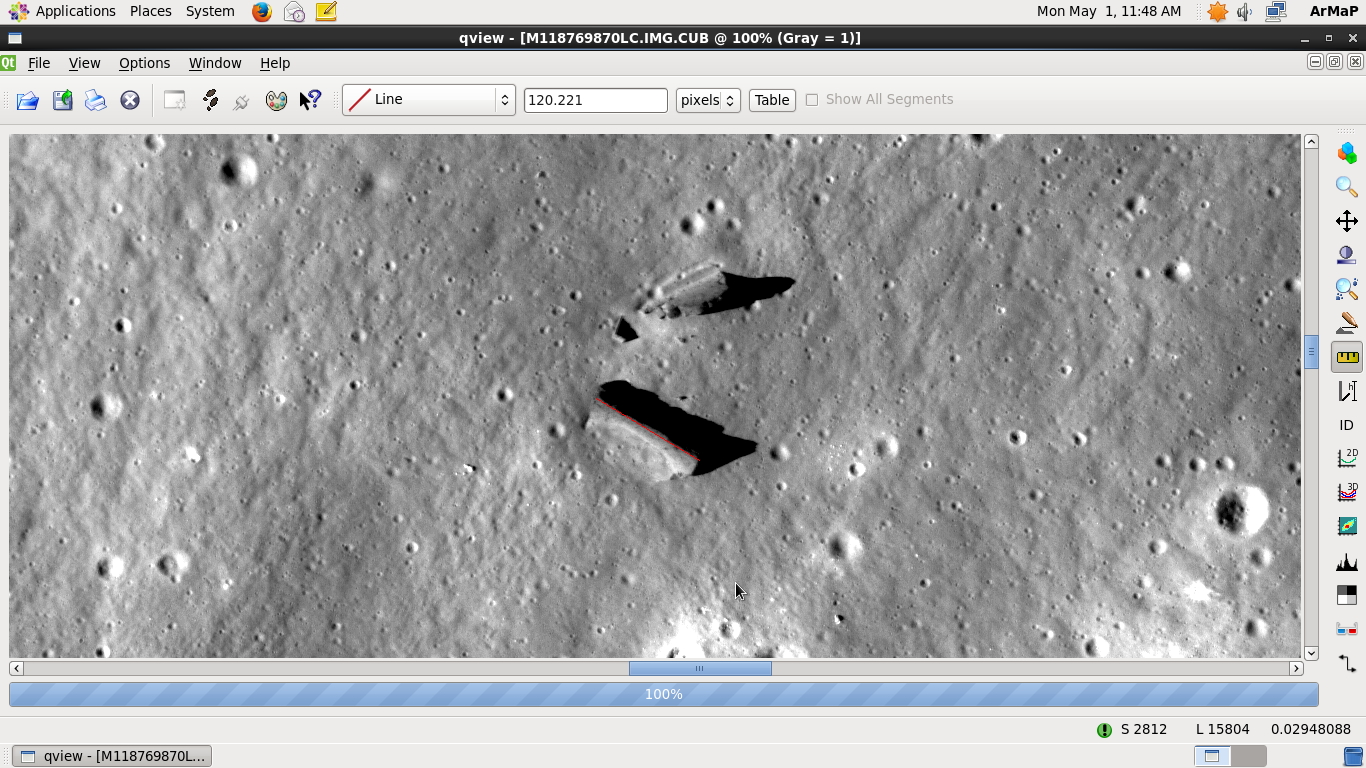
M1115441699L
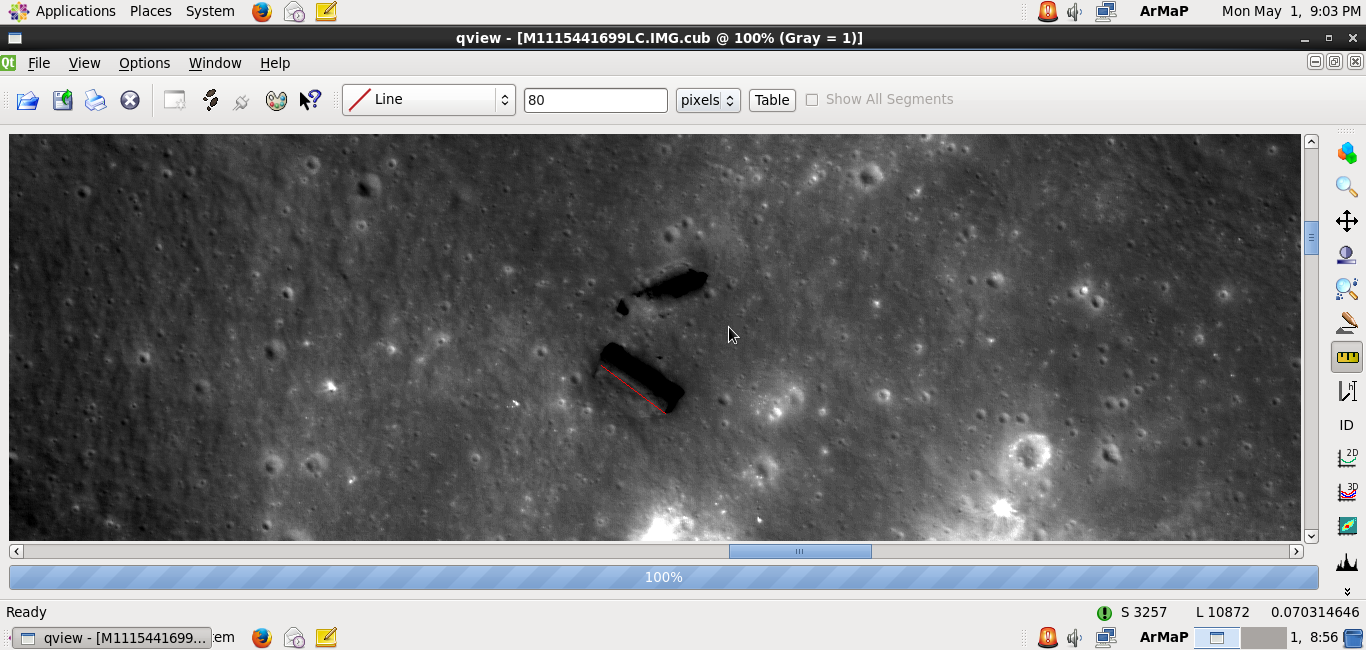
M1153132512R
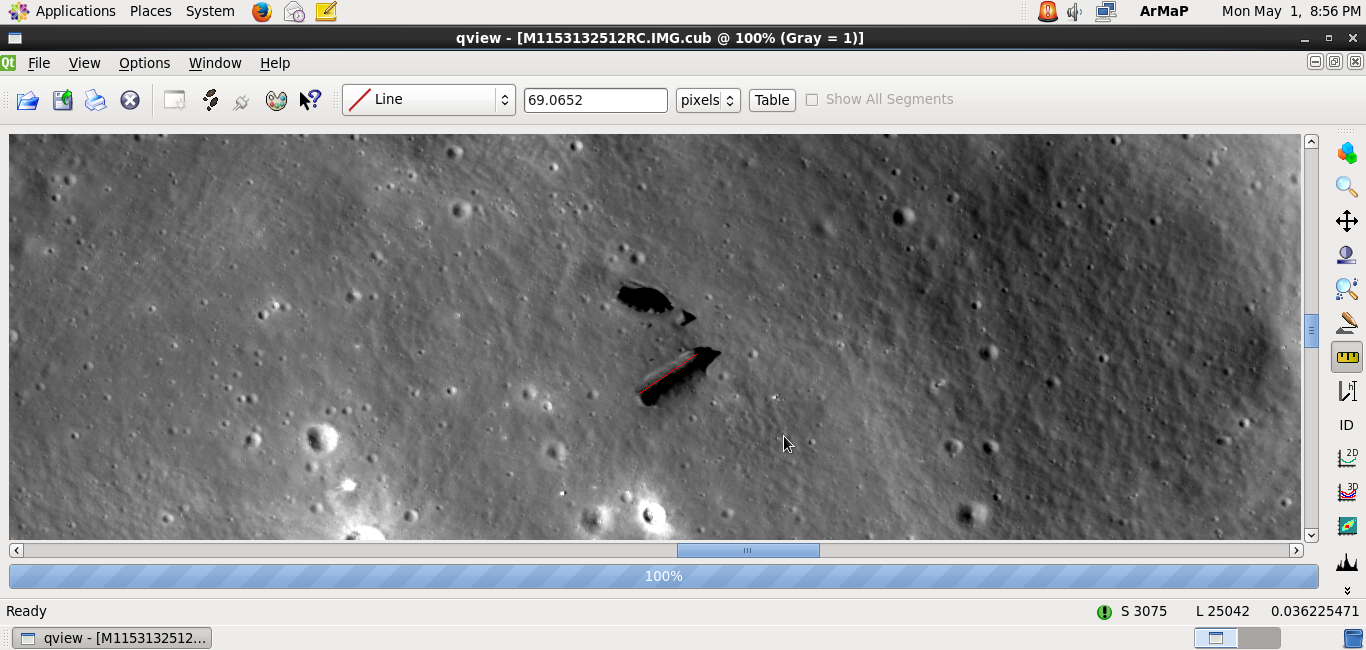
M1168450258L
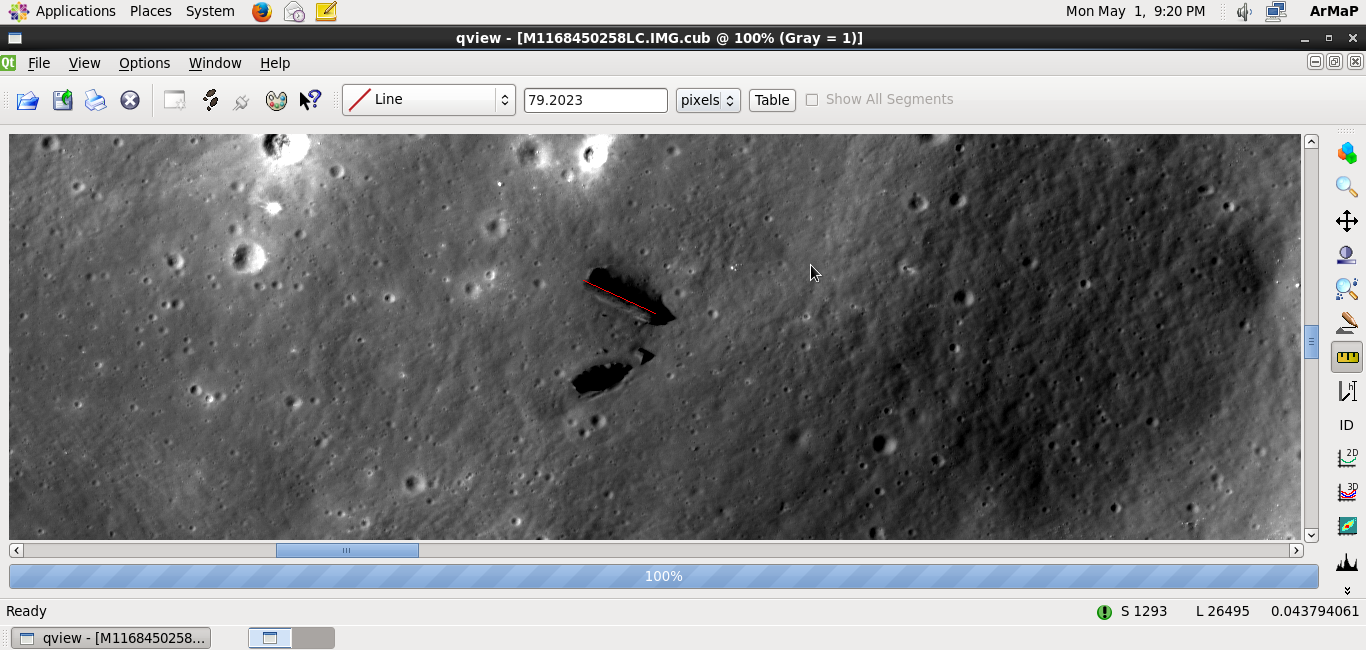
Those measurements in pixels, when taking into account the photos' resolutions, turn into:
M118769870L: 66 metres
M1115441699L: 64 metres
M1153132512R: 63 metres
M1168450258L: 71 metres
There are some differences, probably resulting from a less than good measurement, but all are consistent with each other, giving an average length of 66 metres.
He used four LROC images on that report, M118769870L, M1115441699L, M1153132512R and M1168450258L, so I downloaded all of those and used ISIS to measure the object.
M118769870L

M1115441699L

M1153132512R

M1168450258L

Those measurements in pixels, when taking into account the photos' resolutions, turn into:
M118769870L: 66 metres
M1115441699L: 64 metres
M1153132512R: 63 metres
M1168450258L: 71 metres
There are some differences, probably resulting from a less than good measurement, but all are consistent with each other, giving an average length of 66 metres.
By using this site I found two more photos that show those objects, photo M1207277724L and photo M1207284757L,
and this last one is different from the others, as it has the light coming from a slightly different direction.
That last photo, when opened in ISIS and after a "stretching" the colours, looks like this:
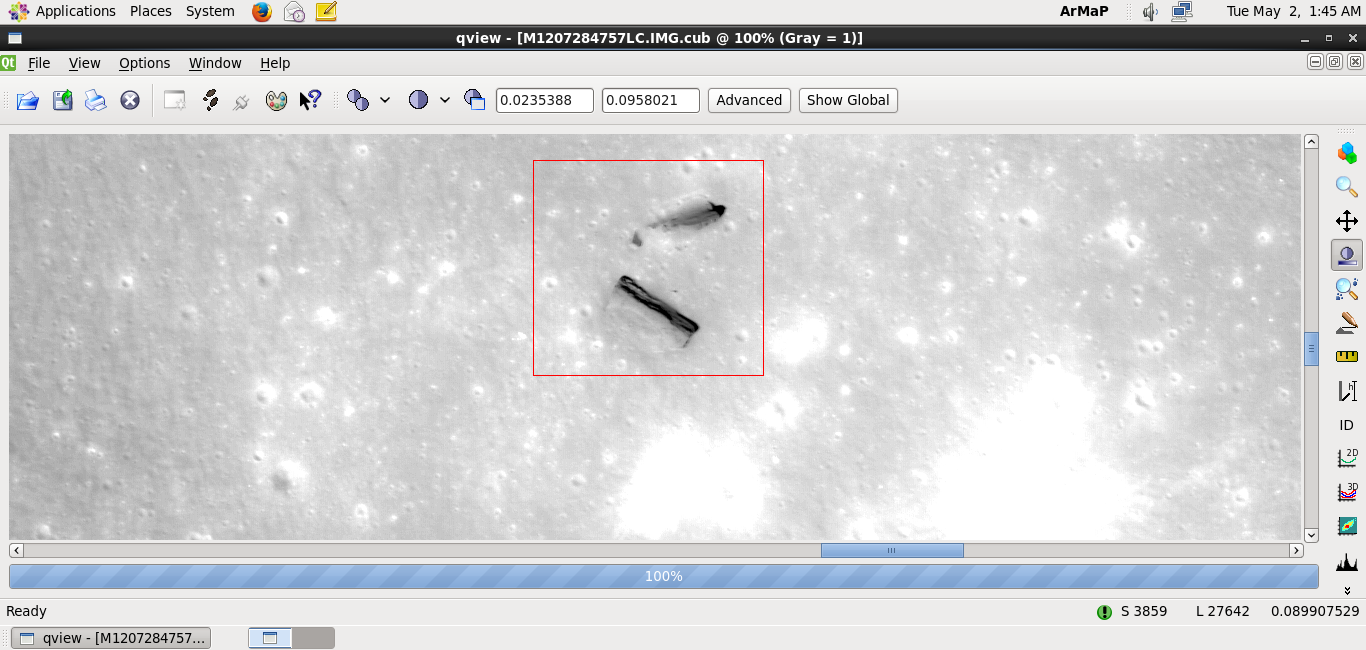
Now I have to look at the other photos after "stretching" their colours.
That last photo, when opened in ISIS and after a "stretching" the colours, looks like this:

Now I have to look at the other photos after "stretching" their colours.

new topics
-
'Mass Casualty event' - Attack at Christmas market in Germany
Mainstream News: 1 hours ago -
Search to Resume for MH 370
Disaster Conspiracies: 3 hours ago -
Sue Gray, Sir Keir Starmer's former Chief of Staff, Nominated for Peerage
Regional Politics: 5 hours ago -
Biden Nationalizes Another 50,000+ Student Loans as He Heads for the Exit
US Political Madness: 5 hours ago
top topics
-
'Mass Casualty event' - Attack at Christmas market in Germany
Mainstream News: 1 hours ago, 15 flags -
An Interesting Conversation with ChatGPT
Science & Technology: 15 hours ago, 8 flags -
Biden Nationalizes Another 50,000+ Student Loans as He Heads for the Exit
US Political Madness: 5 hours ago, 7 flags -
Sue Gray, Sir Keir Starmer's former Chief of Staff, Nominated for Peerage
Regional Politics: 5 hours ago, 3 flags -
Search to Resume for MH 370
Disaster Conspiracies: 3 hours ago, 2 flags
active topics
-
'Mass Casualty event' - Attack at Christmas market in Germany
Mainstream News • 15 • : chr0naut -
Can someone 'splain me like I'm 5. Blockchain?
Science & Technology • 90 • : Ravenwatcher -
Russias War Against Religion in Ukraine
World War Three • 54 • : andy06shake -
Search to Resume for MH 370
Disaster Conspiracies • 3 • : chr0naut -
Drone Shooting Arrest - Walmart Involved
Mainstream News • 36 • : imitator -
-@TH3WH17ERABB17- -Q- ---TIME TO SHOW THE WORLD--- -Part- --44--
Dissecting Disinformation • 3768 • : Thoughtful3 -
Have you noticed?? Post Election news coverage...
World War Three • 10 • : chr0naut -
An Interesting Conversation with ChatGPT
Science & Technology • 21 • : Flyingclaydisk -
US Federal Funding set to Expire December 20th. Massive CR on the way.
Mainstream News • 45 • : marg6043 -
Biden Nationalizes Another 50,000+ Student Loans as He Heads for the Exit
US Political Madness • 5 • : Dalamax
